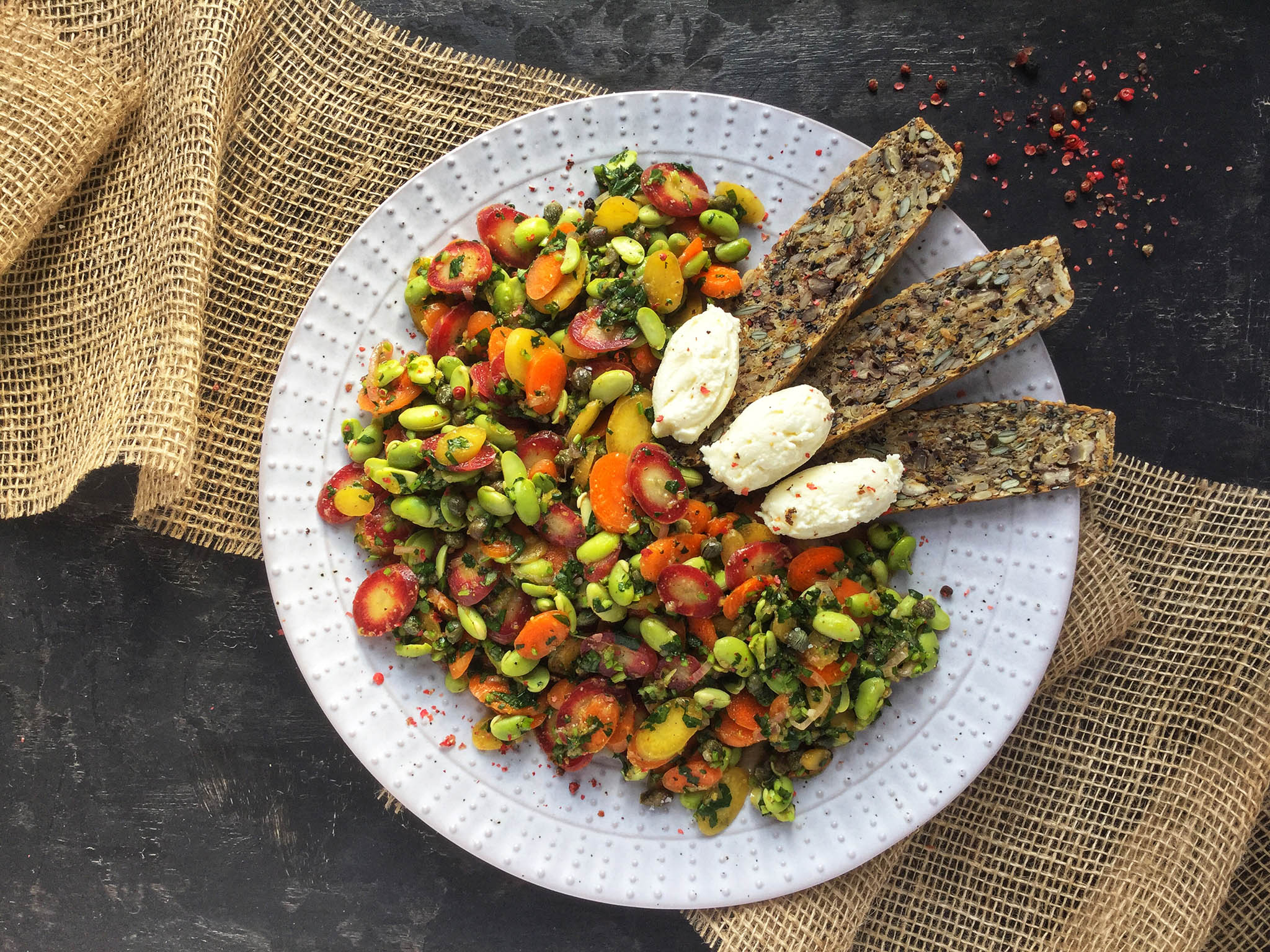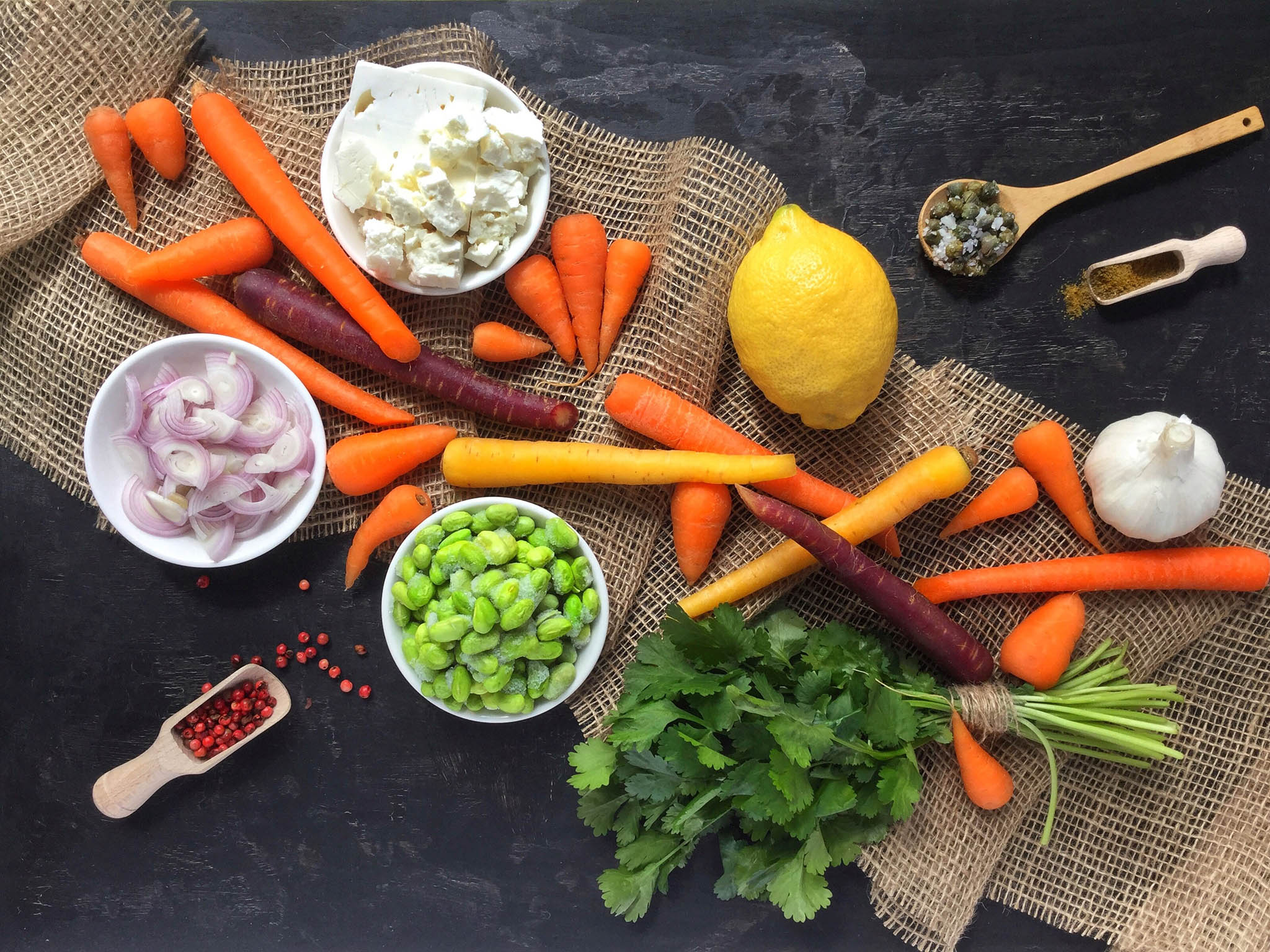How to make carrot and edamame bean salad
This ubiquitous, mostly home-grown vegetable can be used for both sweet and savoury dishes, from muffins to fruit juices and stews to salads

Your support helps us to tell the story
From reproductive rights to climate change to Big Tech, The Independent is on the ground when the story is developing. Whether it's investigating the financials of Elon Musk's pro-Trump PAC or producing our latest documentary, 'The A Word', which shines a light on the American women fighting for reproductive rights, we know how important it is to parse out the facts from the messaging.
At such a critical moment in US history, we need reporters on the ground. Your donation allows us to keep sending journalists to speak to both sides of the story.
The Independent is trusted by Americans across the entire political spectrum. And unlike many other quality news outlets, we choose not to lock Americans out of our reporting and analysis with paywalls. We believe quality journalism should be available to everyone, paid for by those who can afford it.
Your support makes all the difference.As a child, my parents always told me “Eat your carrots, they’ll help you see in the dark”.
Trusting everything my parents said I accepted that this was the truth, and in a way it was, as a vitamin A deficiency can lead to night blindness – the inability to see in low light or darkness.
Carrots contain high levels of vitamin A, so eating carrots will up your vitamin A intake, therefore, although they won’t actually help you see in the dark, they can help to prevent loss of vision. The logic of parents!
British carrots are available in the shops for nearly 12 months of the year, from early June round to May. Most of the carrots in our supermarkets are home grown, so be patriotic and fill your shopping basket with carrots.
They are such a versatile vegetable, you’ll never run out of ways to use them in your cooking: from roasted, steamed, boiled, mashed and added to soups and stews.
Eat them raw chopped or coarsely grated in a salad or coleslaw, or simply sliced into batons and enjoyed on their own or with your favourite dips.
Carrots are also one of those vegetables which work for savoury or sweet dishes. They will add sweetness to a vegetable juice and can also be added to baked goods, cakes and muffins.
The thinly sliced raw carrots add sweetness and crunch to this simple and speedy dish which is packed full of punchy flavours. Enjoy it with crackers to scoop up the salad.

Carrot and edamame bean salad with a warm lemon caper dressing and whipped feta
Serves 2
For the whipped feta
200g Feta cheese
50g soft cheese, at room temperature
Splash of milk
For the salad
300g mix of rainbow and chantenay carrots, sliced diagonally into thin slices
300g frozen shelled edamame beans
For the dressing
1 tablespoon rapeseed oil
1 banana shallot, very finely sliced
1 garlic clove, minced
1 teaspoon ground cumin
30ml avocado oil
60ml white wine vinegar
1 teaspoon sugar
1/4 teaspoon freshly ground black pepper
1/2 teaspoon pink peppercorns
Zest and juice of a large lemon
1 tablespoon of capers packed in salt
30g coriander, leaves only, finely chopped
To serve
Crackers
To make the whipped feta, crumble it into a food processor and pulse until small crumbs remain. Add the soft cheese and a splash of milk and process for 3-4 minutes until smooth and creamy.
Ideally the mixture should be firm enough to hold the shape of a quenelle after chilling so be careful not to add too much milk. Scrape down the sides every now and then to make sure everything is incorporated.
Put the mixture into a bowl, cover and refrigerate until needed. This will make more than you need but it will keep in the fridge for a couple of days and is great with steak, baked potatoes or steamed vegetables.
Cook the edamame beans in boiling water for 5 minutes. Remove with a slotted spoon and plunge into cold water, this stops the cooking process and ensures they keep their bright green colour. Drain in a colander and leave to one side to cool.
To make the dressing, in the same pan heat the rapeseed oil on a medium heat and sauté the shallot and garlic for 2-3 minutes. Remove from the heat and add the ground cumin, avocado oil, vinegar, sugar, black and pink peppercorns and the lemon zest and juice.
Stir until the sugar has melted then add the capers and chopped coriander, taste and adjust the seasoning if necessary.
Combine the sliced carrots and edamame beans together and divide between two serving plates. Drizzle the warm dressing generously over the top. Serve with crackers to scoop up the salad and quenelles of the whipped feta.
To make the quenelles:
You will need a dessert spoon and a bowl of just boiled water. Dip the spoon in the water until it is hot, I usually leave it in there for a minute to begin with. Hold the spoon with the rounded base up, place the nearest edge into the chilled whipped feta, the edge furthest away from you should be close to the surface but not touching.
With a little pressure, push the spoon away from you then twist your wrist so that the furthest edge of the spoon is in the mixture and pull it back towards you, the mixture will curl itself into the shape of the spoon.
As you pull the mixture (hopefully) folds itself into a neat little egg shape. Put your spoon back into the hot water before attempting another quenelle. This may take a little bit of practice so don’t worry if it doesn’t work first time, just keep going until you nail it then mix all the "mistakes" together, put back in the fridge to firm up and try again later.
I think this is technically called a rocher, but some people call it a one-spooned quenelle. If the mixture is firm enough you can make these in advance, put them on a plate, spaced well apart and return them to the fridge until needed.
Follow Beverley Hicks @littlechelseakitchen
Join our commenting forum
Join thought-provoking conversations, follow other Independent readers and see their replies
Comments